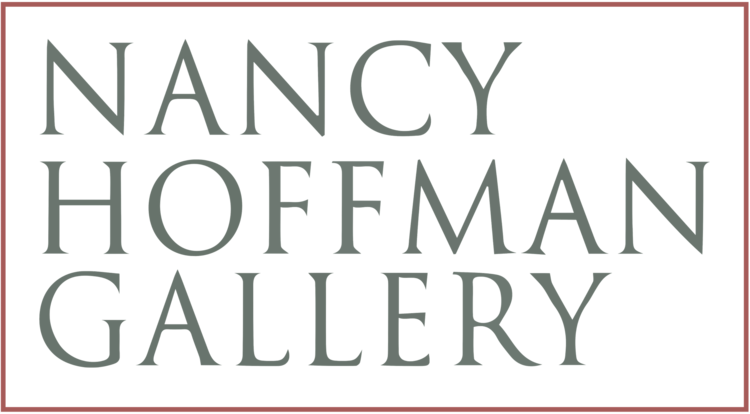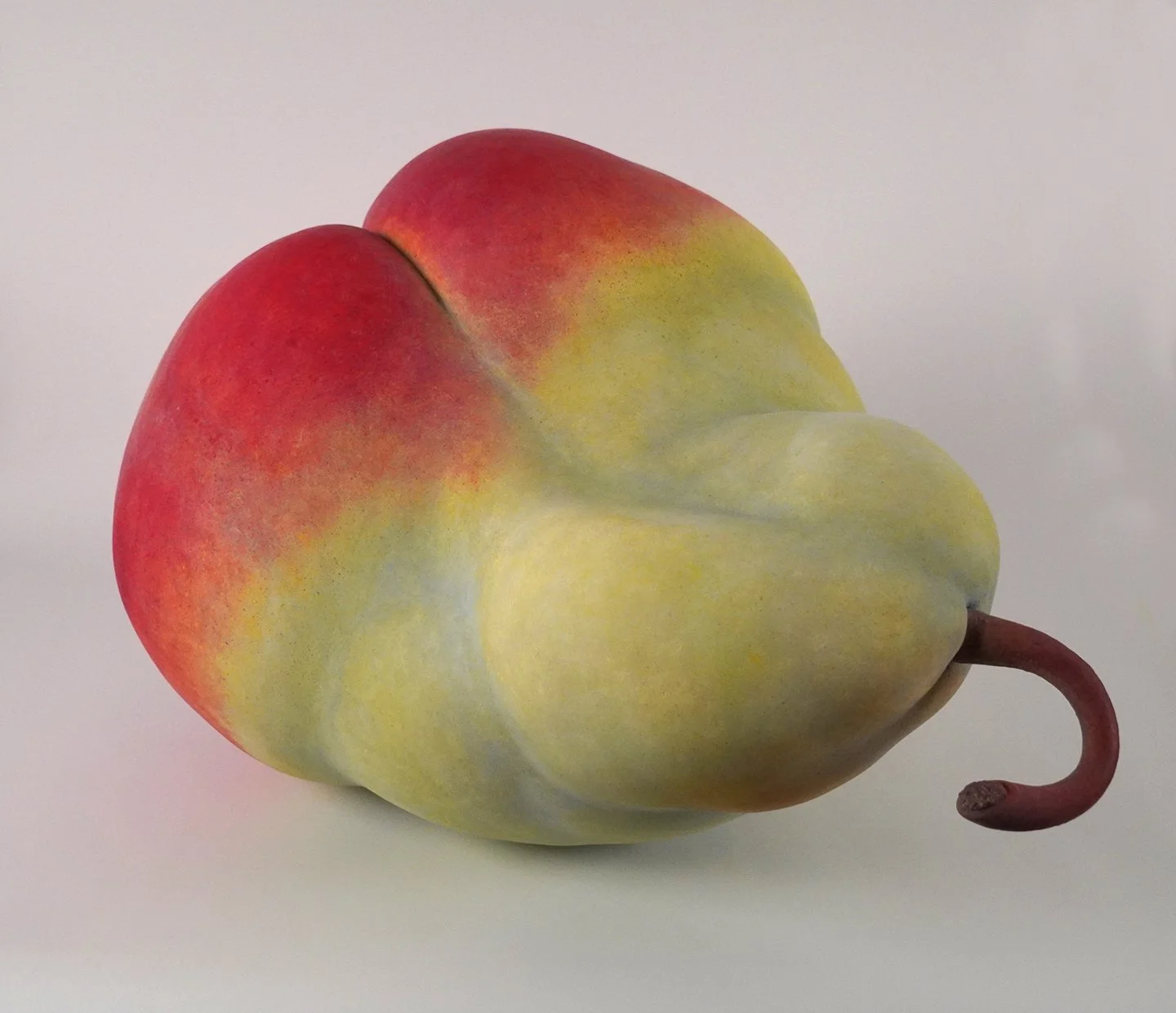ArtSeen
Judy Fox: Harvest
By Jonathan Goodman
Judy Fox, Broccoli, 2023. Terra cotta, casein paint, 4 x 10 x 7 inches. Courtesy the artist and Nancy Hoffman Gallery.
ON VIEW
Nancy Hoffman Gallery
Harvest
September 7–October 21, 2023
New York
A graduate of Yale, terracotta sculptor Judy Fox now lives in Rhinebeck in the Hudson Valley. But she also teaches in New York City at the New York Academy of Art. Her clay sculptures, treated with casein paint, include such oddities as a pair of small broccoli heads, connected by a thick stalk traveling down the middle. The smaller connections between stalk and head create something very like a lung system in dark green. Then there is the pepper taken over by swathes of subtle color, or the parsnip, parted into two segments and painted an off-white—all are examples of Fox’s expertise.
It is the details on these larger-than-life but also true-to-size works that give the pieces their remarkable presence. For example, Fox’s apple has two worm-holes, placed so they look like eyes on a face, and her orange’s pebbled surface is reproduced in all its textured minutiae. It is probable that clay is a material especially well suited to creating this kind of surface effect. The largeness of the sculpture and the particulars animating its exterior result in a realism transformed into something whose accuracy and dimensions seem to loom over the vegetable’s original size, although sometimes the scale of the original and the copy are equal.
Judy Fox, Pear, 2023. Terra cotta, casein paint, 22 x 32 x 22 inches. Courtesy the artist and Nancy Hoffman Gallery.
Melon with Webbing (2023), just a bit larger than eight inches in diameter, has dark stripes aligning over a lighter green. The realism is superb. Like all the art in the show, this work does not incorporate a conceptual bias. Instead, it relies on a (historical) realism, whose accuracy becomes both a nod to the way things used to be made in sculpture, a long time ago, and the hyperrealism of some art made in the sixties and seventies. Somehow, though, it looks like Fox is presenting her preference for craft above all else. It might be said that the work is profoundly traditional, being oriented toward a factual realism that exists in contrast to much current sculptural art, which trades on ideas just as much as shapes and materials.
The variety of fruits and vegetables presents a formidable diversity, while at the same time, the general creation of the fifty works in the show is oriented toward an intellectual uniformity: a fidelity to natural design. A large part of Fox’s effectiveness has to do with her detailed truths. This would lead to a belief in the truth of the object as something completely and inherently credible, rather than something imaginatively constructed. Only when we conceive of visual truth as something larger than the image it is based on can an artwork become fully accurate; otherwise, the sculpture merely mimics the reality that preceded it.
Pear (2023) comes close to a painting in Fox’s choice of colors: on the rounded end of the fruit, an attractive red, and on the upper half, a soft light green. The stem, fairly short, has a curve so that its end points downward. Its color is brown. The fruit has a couple of rounded, bulging areas, and almost resembles a hilly landscape in miniature. Indeed, in more than a few ways, this work and other sculptures made by Fox can, sometimes, move away from art toward a perfectly realized nature—surely Fox’s audiences can see the two states of coexistence. Inevitably, the works are art, but they suggest, in their compilation of curves and mounds, an inventory of nature’s infinite capacity for change.
Today, realism may be fully necessary in the sense that man-made constructions—their mechanical and artificial adaptations—lead to a world devoid of anything genuine. As time goes on, the ersatz is likely to take over, leaving us only with a close mimicry of nature. Highly realistic copying may be the best we can do, and Fox’s art is among the best we can find.
Contributor
Jonathan Goodman is an art writer and poet who focuses on modern and contemporary art.



